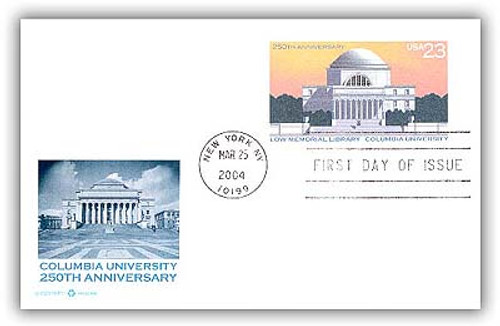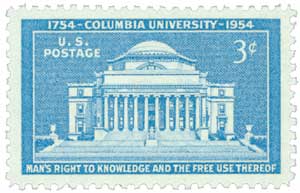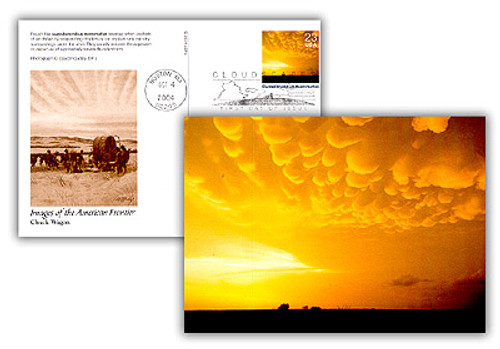
# UX405 - 2004 23c Columbia University PC FDC
Founding Of Columbia University
Lewis Morris was one of the first people to suggest establishing a college in the Province of New York in 1704. He suggested a plot of land given to Trinity Church by Lord Cornburry known as King’s Farm. No steps would be taken for nearly 50 years.
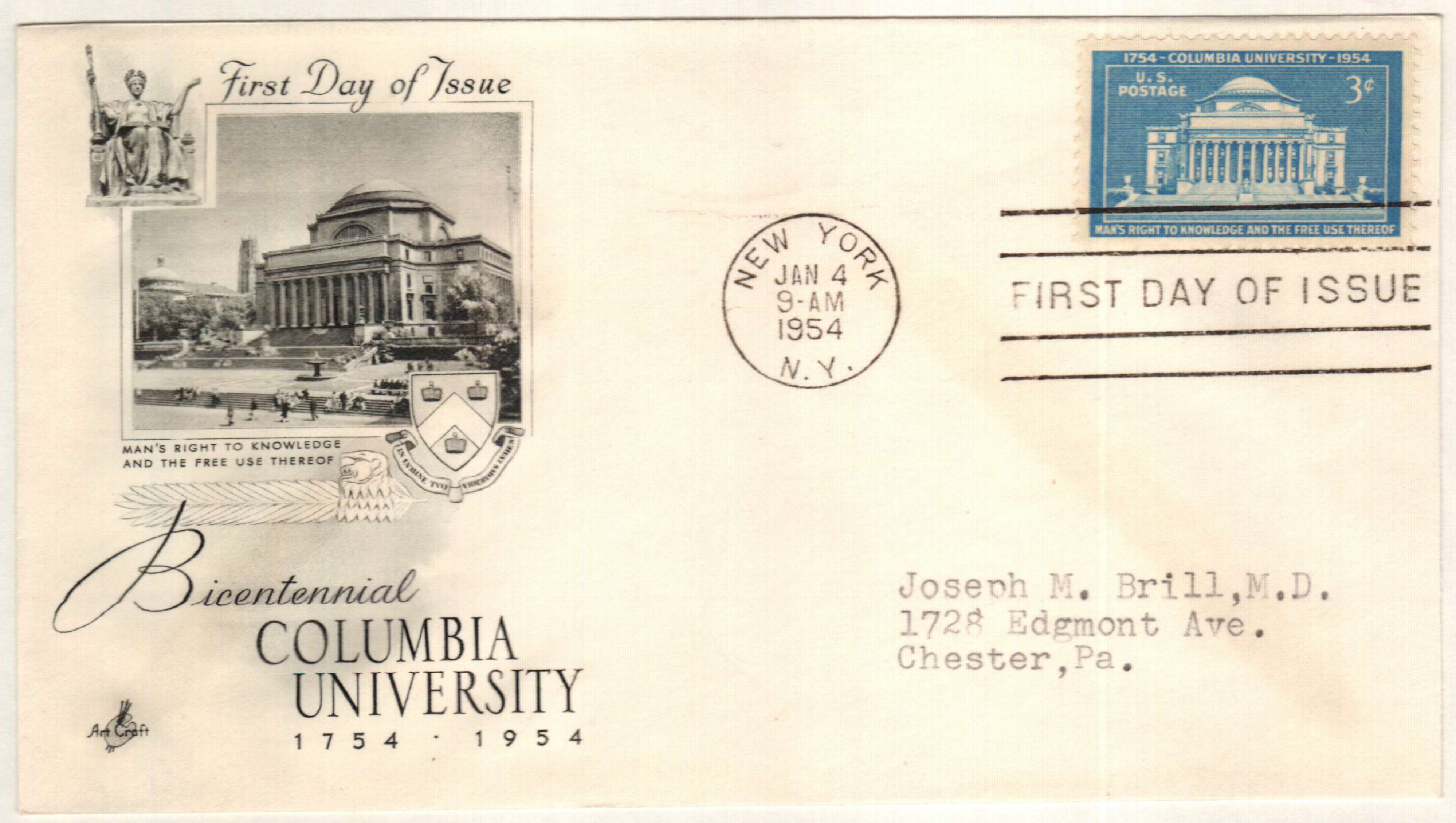
Then in 1745, New Jersey, which had established its own government separate from New York a few years earlier, announced it was going to open its own school, the College of New Jersey (Princeton University). New Yorkers then felt the need to have their own college.
The following year, the New York general assembly passed an act to raise £2,250 through a public lottery to establish a new college. However, they hadn’t established a founding denomination (which was common practice at the time) or selected a location. Then, in 1751, the New York assembly established a commission of 10 people, seven of whom were part of the Church of England, to manage the funds to build the college.
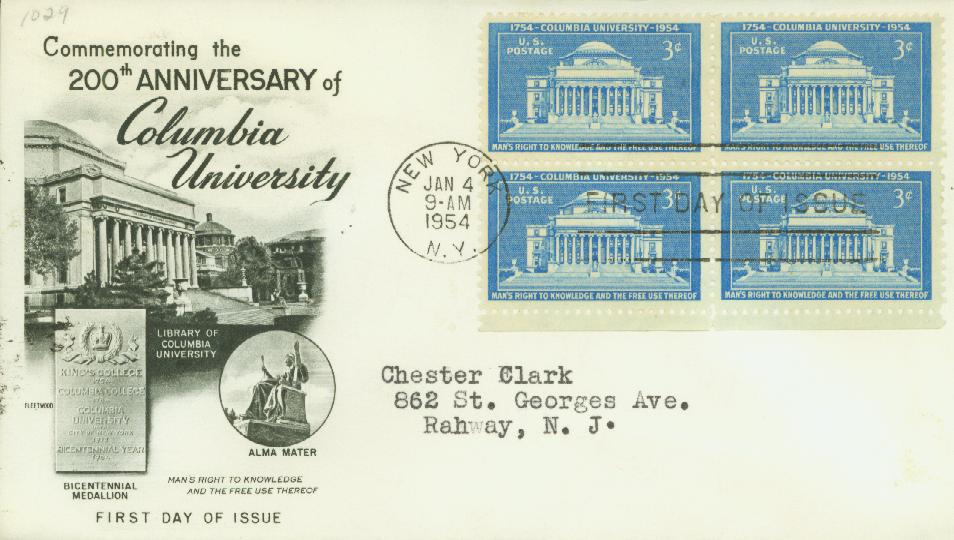
The following year, Trinity Church offered six acres for the college’s first campus. However, William Livingston and other members of the commission didn’t want the school to have a religious affiliation, which delayed progress. Eventually, the commission voted to accept the lands, but only as long as the school’s affiliation was to the Church of England. The school, King’s College, was officially established on January 4, 1754.
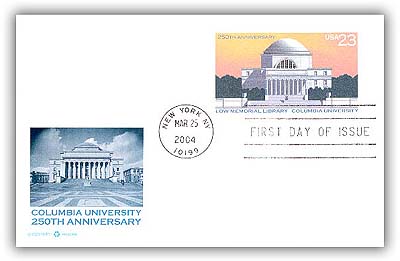
The first classes at King’s College were held that July in a newly built schoolhouse near Trinity Church. Dr. Samuel Johnson was the school’s only instructor at first, with a class of just eight students. The school then received its royal charter from King George III later that year, on October 31, 1754. The school found a new location at Park Place in 1760 and in 1767 created the first medical school to give the M.D. degree in America.
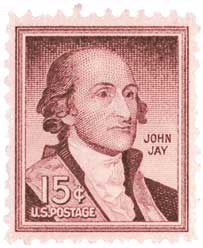
During the American Revolution, King’s College closed and was used as a military hospital and barracks. After the war, John Jay and Alexander Hamilton aided in the school’s reopening as Columbia College in 1784. The school expanded in the 1790s when New York City served as the federal and state capital.
Â
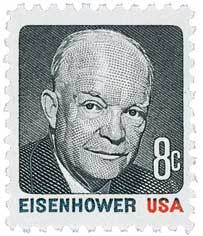
Over the years, Columbia added many schools, including a medical school, law school, and school of architecture. In 1896, Columbia became a university, then moved to its present-day site in upper Manhattan in 1897. Today, it’s considered a leading university in the liberal arts and professional studies.
Many notable Americans (several of whom have appeared on stamps) have graduated from Columbia, and you can see a list here. You can also click here for more about the school’s history.
Â
Founding Of Columbia University
Lewis Morris was one of the first people to suggest establishing a college in the Province of New York in 1704. He suggested a plot of land given to Trinity Church by Lord Cornburry known as King’s Farm. No steps would be taken for nearly 50 years.

Then in 1745, New Jersey, which had established its own government separate from New York a few years earlier, announced it was going to open its own school, the College of New Jersey (Princeton University). New Yorkers then felt the need to have their own college.
The following year, the New York general assembly passed an act to raise £2,250 through a public lottery to establish a new college. However, they hadn’t established a founding denomination (which was common practice at the time) or selected a location. Then, in 1751, the New York assembly established a commission of 10 people, seven of whom were part of the Church of England, to manage the funds to build the college.

The following year, Trinity Church offered six acres for the college’s first campus. However, William Livingston and other members of the commission didn’t want the school to have a religious affiliation, which delayed progress. Eventually, the commission voted to accept the lands, but only as long as the school’s affiliation was to the Church of England. The school, King’s College, was officially established on January 4, 1754.

The first classes at King’s College were held that July in a newly built schoolhouse near Trinity Church. Dr. Samuel Johnson was the school’s only instructor at first, with a class of just eight students. The school then received its royal charter from King George III later that year, on October 31, 1754. The school found a new location at Park Place in 1760 and in 1767 created the first medical school to give the M.D. degree in America.

During the American Revolution, King’s College closed and was used as a military hospital and barracks. After the war, John Jay and Alexander Hamilton aided in the school’s reopening as Columbia College in 1784. The school expanded in the 1790s when New York City served as the federal and state capital.
Â

Over the years, Columbia added many schools, including a medical school, law school, and school of architecture. In 1896, Columbia became a university, then moved to its present-day site in upper Manhattan in 1897. Today, it’s considered a leading university in the liberal arts and professional studies.
Many notable Americans (several of whom have appeared on stamps) have graduated from Columbia, and you can see a list here. You can also click here for more about the school’s history.
Â

